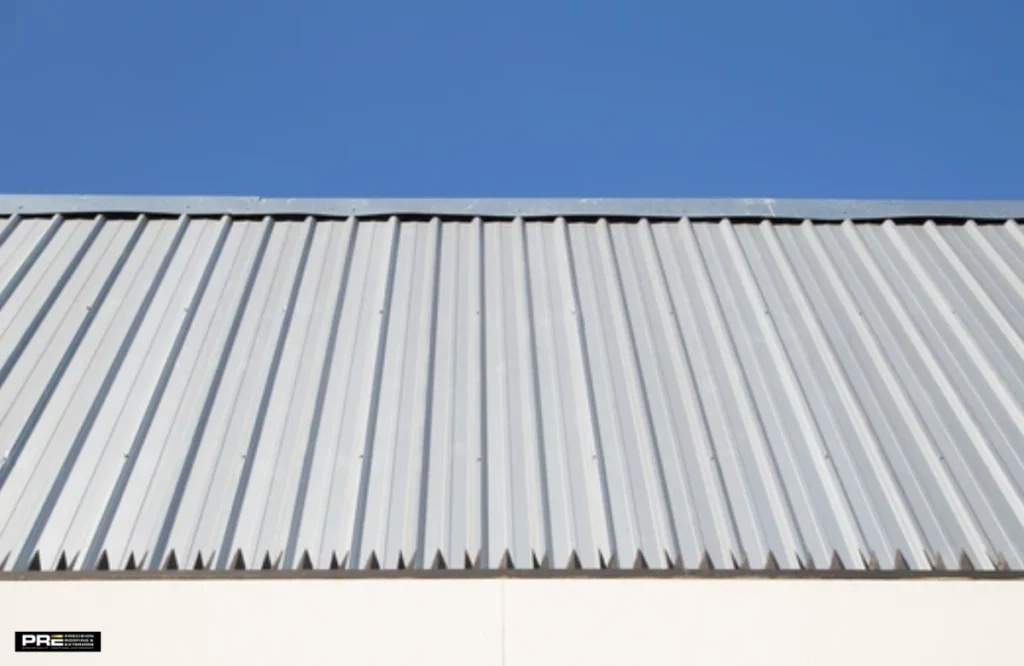Aluminum roofing has become a popular choice for homeowners and property managers looking for long-term performance without heavy maintenance. It’s lightweight, rust-resistant, and performs well in both coastal and inland environments. However, one of the most common questions is: How long does an aluminum roof last?
In general, aluminum roofing can last 40 to 60 years when installed and maintained properly. Its lifespan depends on several important factors, including material thickness, installation quality, environmental exposure, and roof design. Add in variables like storm damage, drainage, and routine upkeep, and you’ll see why aluminum roofing is strong, but not invincible.
Life Expectancy of an Aluminum Roof
A professionally installed aluminum roof typically lasts between 40 and 60 years, with some systems holding up even longer depending on climate and care. Aluminum is naturally resistant to rust and corrosion, making it ideal for coastal or humid regions. It also reflects sunlight well, helping reduce heat buildup in warmer climates.
While it isn’t as hard as steel, it resists cracking, shrinking, and general wear much better than asphalt or wood shingles. An aluminum roof can easily outlast most traditional materials with quality panels, strong fasteners, and the right coating.
What Affects Aluminum Roof’s Longevity
Let’s look at the main variables influencing how well and how long an aluminum roof performs.
Material Thickness and Panel Quality
Aluminum roofs are available in a variety of panel thicknesses. Thicker panels hold up better against dents, wind uplift, and structural movement. Lower-grade panels may be more affordable, but they’re also more vulnerable to wear over time. Choosing a premium aluminum panel with high-tensile strength and factory-applied finishes gives your roof a stronger starting point and longer overall performance.
Installation Quality
No roofing material can perform well if it’s installed poorly. Aluminum roofs require precise fastener spacing, watertight seams, and proper flashing at all joints and transitions. If these details are skipped or rushed, even the best aluminum panels can shift or leak.
A roofing crew with experience installing metal, specifically aluminum, knows how to prepare the deck, align the panels, and secure every point of potential vulnerability. Good installation is often the difference between a 20-year and a 50-year roof.
Climate and Environmental Conditions
While aluminum holds up better than many materials in tough environments, certain conditions still impact how long it lasts. In areas with high winds or frequent hail, lighter-gauge panels may dent more easily.
In coastal regions, aluminum resists salt corrosion, but exposure to constant moisture still demands proper ventilation and drainage. On the other hand, aluminum’s resistance to rust makes it one of the best metals for variable or damp climates when properly coated.
Roof Pitch and Drainage Design
Aluminum panels perform best when paired with the right roof design. A steeper pitch allows water and debris to run off quickly, reducing the risk of standing water or clogged valleys.
Flat or low-slope designs require special attention to flashing and sealing, since slow drainage can put long-term pressure on panel seams. Proper slope, gutter setup, and clean drainage paths all help extend the lifespan of your aluminum roof.
Storm Damage and Physical Impact
Aluminum is a soft metal compared to steel, which means it may dent under pressure from large hail, fallen branches, or debris. While dents don’t always affect the roof’s function, repeated damage over time can weaken seams or coatings.
If you live in a storm-prone area, consider impact-rated panels and post-storm inspections. Catching small issues early can prevent water infiltration and extend the life of the roof.
Ongoing Maintenance
Aluminum roofs are low-maintenance, but not maintenance-free. Over time, fasteners can shift, coatings can fade, and joints may need resealing. A simple annual inspection helps spot early issues, like lifted panels or buildup in valleys.
Cleaning off debris and keeping gutters clear also protects against drainage problems. When caught early, minor fixes keep your roof looking and performing its best for decades.
Conclusion
To sum it up, with the right material, installation, and care, your aluminum roof can last between 40 and 60 years, sometimes more. But that depends on the full picture: everything from panel thickness and craftsmanship, to weather exposure, roof slope, and routine inspections. When each of these pieces is managed properly, aluminum offers a strong return on investment with decades of reliable protection.
If you’re considering aluminum roofing and want it built to last, reach out to the experts roofing contractors at Precision Roofing for guidance, craftsmanship, and long-term value you can count on.

